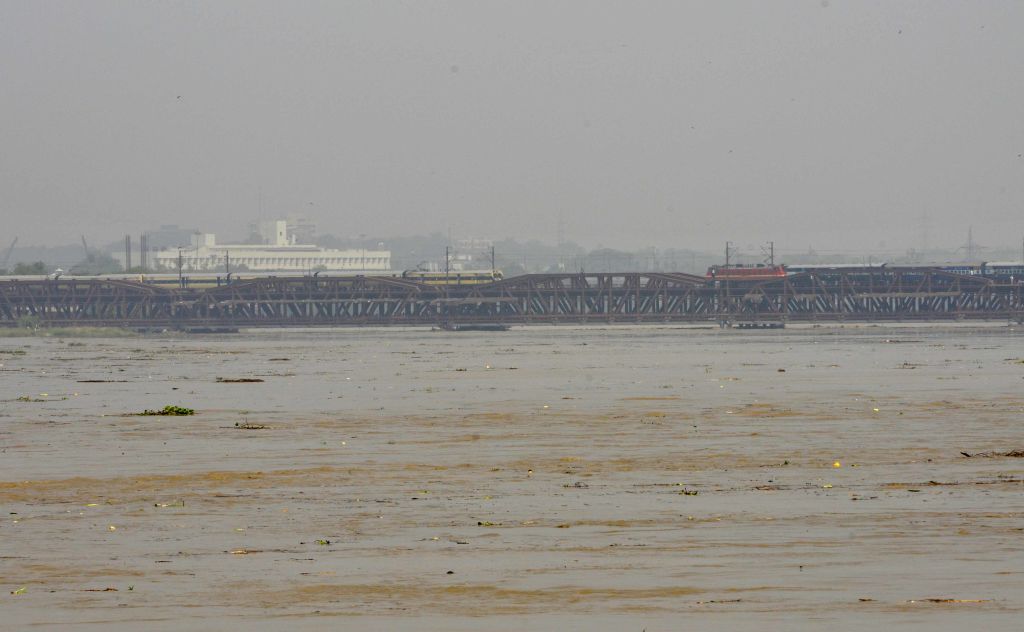The Yamuna River in Delhi has surged to a dangerous level, flowing more than a meter above the danger mark of 205.33 meters on Monday morning.
In response to this alarming situation, authorities have suspended train movement on the Old Railway Bridge (ORB). The water level has been hovering around the danger mark after reaching an all-time high of 208.66 meters on July 13.
The recent breach of the danger mark occurred due to an increase in the discharge from the Hathnikund barrage into the river, following heavy rainfall in parts of Uttarakhand and Himachal Pradesh. This has resulted in the suspension of train services on the ORB, with the Delhi-Shahdara route being diverted via New Delhi.
The rising water level of the Yamuna is expected to have severe consequences for ongoing relief and rehabilitation efforts in the flood-affected low-lying areas of the capital.
The Central Water Commission’s data shows a fluctuating water level, reaching 206.57 meters at 3 am on Monday, but gradually dropping again.
The India Meteorological Department has forecast heavy to very heavy rain in parts of Himachal Pradesh and Uttarakhand until July 25, which may exacerbate the situation further. The Hathnikund barrage’s flow rate crossed one lakh cusecs at 9 am on Saturday and fluctuated between two lakh and 2.5 lakh cusecs between 10 am and 5 pm.
Officials from the Delhi irrigation and flood control department have expressed concerns that the heavy rain in upstream areas will impact the rehabilitation of affected families in the inundated low-lying regions. Additionally, there may be an extended stay at relief camps, and the city’s water supply could be affected, considering that the pump house at Wazirabad was inundated for four to five days in mid-July.
Delhi has been grappling with unprecedented waterlogging and floods this month. The heavy rainfall, particularly in the upper catchment areas of the Yamuna, has caused the river to swell to record levels, surpassing the previous high from 1978. The floods have led to the evacuation of over 27,000 people and significant losses in terms of property and livelihoods.
Experts attribute the severity of the flooding to encroachments on the river floodplain, extreme rainfall over a short period, and silt accumulation that has raised the river bed. This has raised concerns about the need for sustainable and effective measures to address such natural disasters in the future. (With inputs from PTI)





